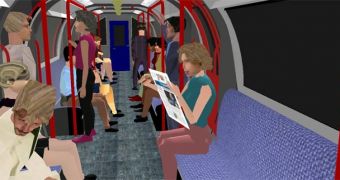Paranoia is far more spread in the general population than generally admitted. Although appearance doesn't show it, some people are paranoid, as revealed by a research published in the "British Journal of Psychiatry."
In our daily contact with other persons, we interpret facial and body cues to assess how friendly or not the others are. But who can be 100% sure of these judgments? In fact, few people approach a value close to 100% of what the reality is, as this depends on how each person translates the cues; the possible errors cause exaggerated or unfounded fears regarding the threat posed by the others, from believing that strangers dislike you to the fact that your colleagues gossip you, attempting deliberately to harm you.
"Paranoid thoughts are often triggered by ambiguous events, such as people looking in one's direction or hearing laughter in a room. This phenomenon can be tricky to study, because it's difficult to recreate such social interactions in the lab. Virtual reality allows us to do just that, to look at how different people interpret exactly the same social situation," said lead researcher Daniel Freeman, Wellcome Trust researcher at the Institute of Psychiatry at King's College London.
The research team equipped 200 subjects with virtual-reality headsets. The virtual world was that of a London underground subway, and the virtual volunteers walked around for four minutes between stations. The train car had other characters that watched around and even met a subject's gaze.
One character was reading a newspaper and another smiled if looked at. Many subjects regarded the virtual train riders as friendly or neutral, but 40% of the subjects had paranoid thoughts. The results showed that the persons more prone to paranoid thoughts were those who were anxious, worried and had low self-esteem.
"Two people can see the same things but draw completely opposite conclusions," Freeman told LiveScience.
One male volunteer reported: "There was a guy spooking me out - tried to get away from him. Didn't like his face. I'm sure he looked at me more than a couple of times though might be imagining it."
One woman said: "Felt trapped between two men in the doorway. As a woman I'm a lot more suspicious of men. Didn't like the close proximity of the men. The guy opposite may have had sexual intent, manipulation or whatever."
In some, the paranoid thoughts went even further: "There's something dodgy about one guy. Like he was about to do something - assault someone, plant a bomb, say something not nice to me, be aggressive."

 14 DAY TRIAL //
14 DAY TRIAL //